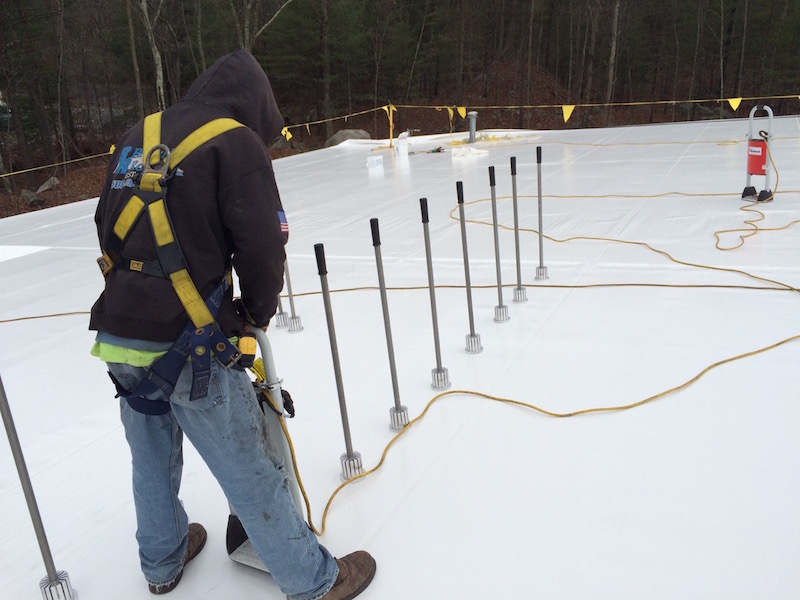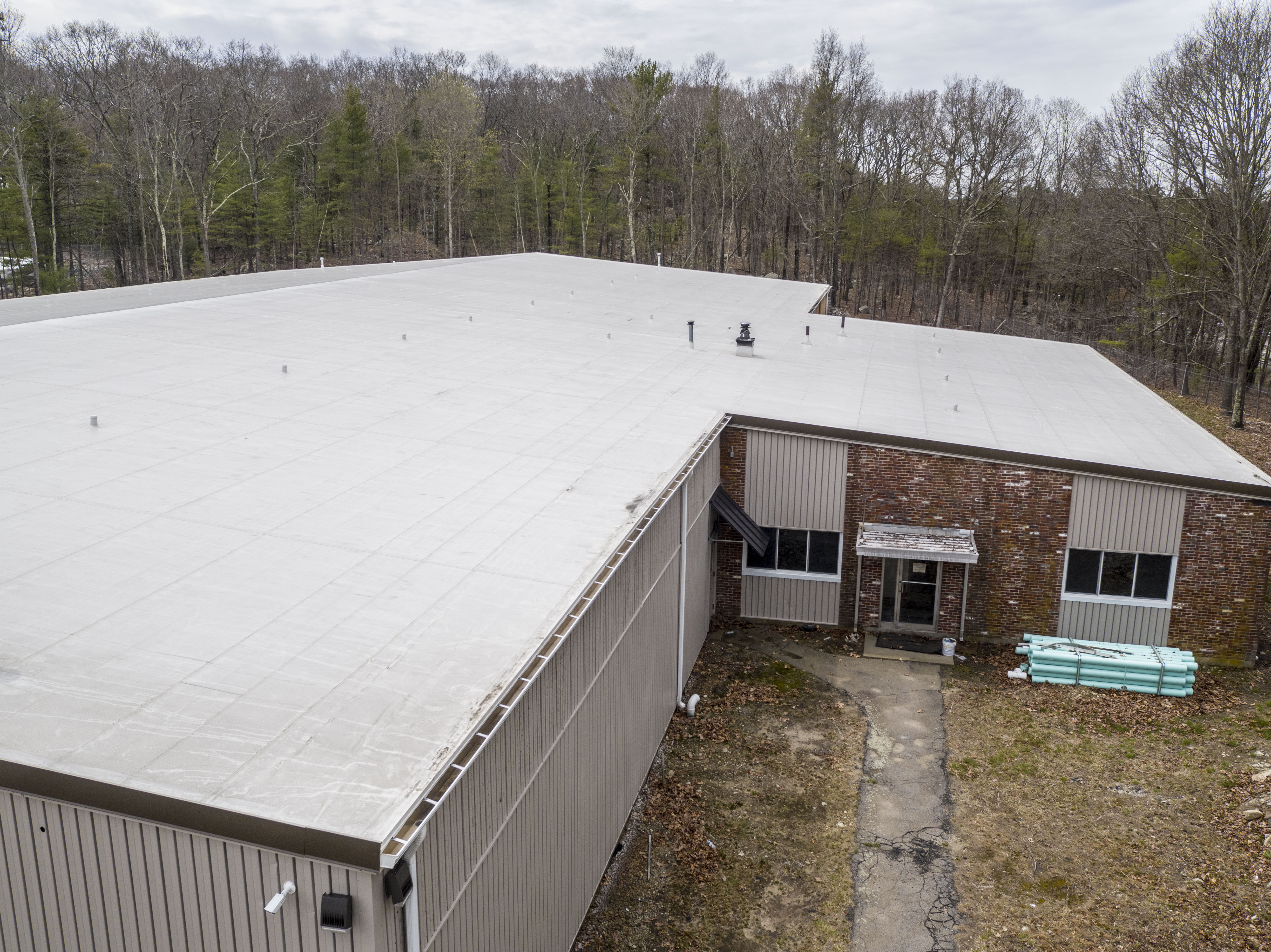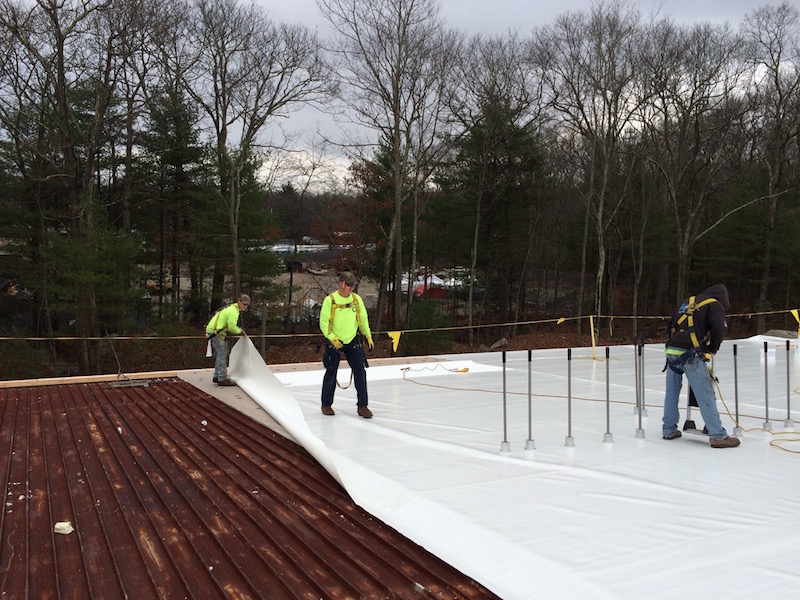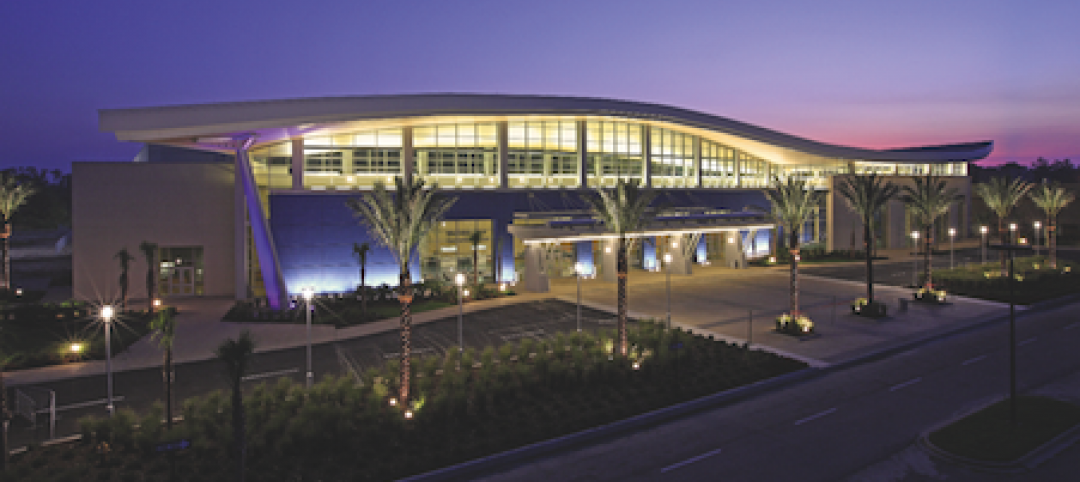When one of New England’s premier manufacturing representative agencies purchased a new warehouse, it was clear from the beginning that the building’s existing standing seam roof needed to be replaced before the necessary internal improvements could begin.
The 27,500 square foot building purchased by EDOS Manufacturers’ Reps, Inc. was an existing metal structure with a standing seam metal roof that was severely rusted. The metal pan yielded pull test values of only 180 lbs., which is pushing the lower margin of acceptability by both industry and Duro-Last® engineering standards.
Building owner and President, Robert Os, hired authorized Duro-Last contractor, Breault Roofing of New Bedford, MA, to explore possible solutions. After considering the advantages of each system, Os decided to install the Duro-Last Duro- Bond® Roofing System. This system was viewed as the best option because of key features that set Duro- Last apart from the rest, such as the ability to custom-fabricate the membrane in house; providing edge-to- edge solutions including metals; Duro-Guard® insulation options, and offering a superior warranty.

Thanks to Duro-Last’s custom-fabrication process, the PVC sheets were custom engineered and manufactured to fit this specific project. Being an innovative Duro-Last contractor, Breault Roofing created a way to make the installation process more efficient by requesting mostly tabless sheets and fastening the membrane with induction welding to the purlins instead of a regular mechanically fastened system onto the pan.
“Purlin fastening meant the Duro-Bond plates were in straight lines. This simplified the installation and allowed the crew to work more quickly and efficiently,” said Scott Bieber, Duro-Last Business Development Manager.

Upon working with Duro-Last customer service and engineering services teams, Duro-Last was able to provide the contractor with the custom-fabricated tabless sheets with the addition of ridge tabs and eave tabs as requested. This resulted in a timely and efficient metal retrofit that used 10,000 less screws than normally required.
Despite taking place in December in Massachusetts, EDOS office manager, Lori Hamelin said, “There were no issues with business operations. Everything went rather smooth and we were able to stay open.” Os added to this by saying that, “The entire project was extremely well done and quick! The people installing it were great and the entire process was seamless.” Both Os and Hamlin also said they are likely to choose a Duro-Last Roofing System again in the future.

To learn more about the Duro-Bond system and other Duro-Last Roofing Systems contact us today at 800-280- 0280 or www.duro-last.com.
Related Stories
| Jan 7, 2011
How Building Teams Choose Roofing Systems
A roofing survey emailed to a representative sample of BD+C’s subscriber list revealed such key findings as: Respondents named metal (56%) and EPDM (50%) as the roofing systems they (or their firms) employed most in projects. Also, new construction and retrofits were fairly evenly split among respondents’ roofing-related projects over the last couple of years.
| Nov 9, 2010
U.S. Army steps up requirements for greening building
Cool roofs, solar water heating, and advanced metering are among energy-efficiency elements that will have to be used in new permanent Army buildings in the U.S. and abroad starting in FY 2013. Designs for new construction and major renovations will incorporate sustainable design and development principles contained in ASHRAE 189.1.
| Nov 3, 2010
Sailing center sets course for energy efficiency, sustainability
The Milwaukee (Wis.) Community Sailing Center’s new facility on Lake Michigan counts a geothermal heating and cooling system among its sustainable features. The facility was designed for the nonprofit instructional sailing organization with energy efficiency and low operating costs in mind.
| Nov 2, 2010
A Look Back at the Navy’s First LEED Gold
Building Design+Construction takes a retrospective tour of a pace-setting LEED project.
| Nov 2, 2010
Wind Power, Windy City-style
Building-integrated wind turbines lend a futuristic look to a parking structure in Chicago’s trendy River North neighborhood. Only time will tell how much power the wind devices will generate.
| Oct 13, 2010
Biloxi’s convention center bigger, better after Katrina
The Mississippi Coast Coliseum and Convention Center in Biloxi is once again open for business following a renovation and expansion necessitated by Hurricane Katrina.
| Oct 13, 2010
Residences bring students, faculty together in the Middle East
A new residence complex is in design for United Arab Emirates University in Al Ain, UAE, near Abu Dhabi. Plans for the 120-acre mixed-use development include 710 clustered townhomes and apartments for students and faculty and common areas for community activities.
| Oct 12, 2010
Cuyahoga County Soldiers’ and Sailors’ Monument, Cleveland, Ohio
27th Annual Reconstruction Awards—Gold Award. The Cuyahoga County Soldiers’ and Sailors’ Monument was dedicated on the Fourth of July, 1894, to honor the memory of the more than 9,000 Cuyahoga County veterans of the Civil War.
| Oct 12, 2010
Building 13 Naval Station, Great Lakes, Ill.
27th Annual Reconstruction Awards—Gold Award. Designed by Chicago architect Jarvis Hunt and constructed in 1903, Building 13 is one of 39 structures within the Great Lakes Historic District at Naval Station Great Lakes, Ill.















